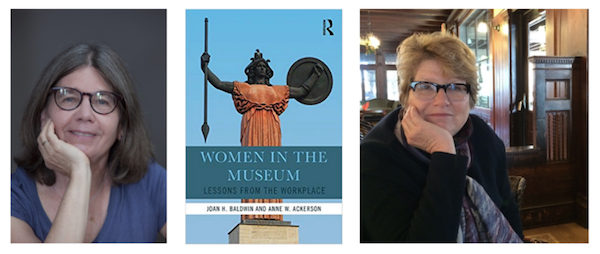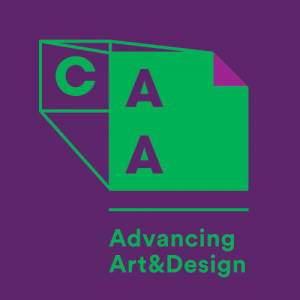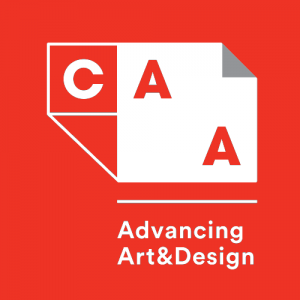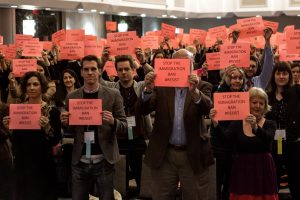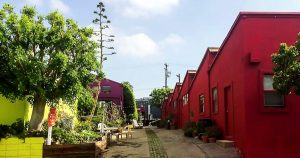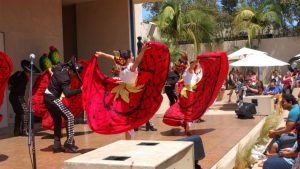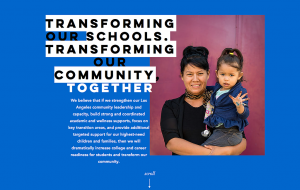CAA News Today
Recording now available–CAA Table Talk: Education and the Arts in a Time of Crisis
posted by CAA — October 05, 2020
Wednesday, October 14, 2020
12:00-12:30 PM (ET)
Free and open to the public
CLICK HERE TO JOIN THE CONVERSATION
We’re delighted to introduce CAA members to a new series of conversations between Meme Omogbai, our executive director and CEO, and N. Elizabeth Schlatter, the president of the CAA Board of Directors. Amidst so much change in our lives, workplaces, and world, join CAA leadership for an informal chat on how CAA is reshaping its efforts to provide access and resources where members need it most. Meme and Elizabeth will speak on the economic implications of COVID-19, the urgent importance of members’ scholarship, and the changing terrain of this cultural moment.
For best results, we recommend using the most up-to-date version of Chrome as your web browser. The conversation will be recorded and shared afterwards.
We would love to hear your questions, too. Please send them in advance to: caanews@collegeart.org
SPEAKER BIOGRAPHIES
Meme Omogbai is Executive Director and CEO of College Art Association (CAA). Before joining CAA, Omogbai served as a member and past Board Chair of the New Jersey Historic Trust, one of four landmark entities dedicated to preservation of the state’s historic and cultural heritage and Montclair State University’s Advisory Board. Named one of 25 Influential Black Women in Business by The Network Journal, Meme has over 25 years of experience in corporate, government, higher education, and museum sectors. As the first American of African descent to chair the American Alliance of Museums, Omogbai led an initiative to rebrand the AAM as a global, inclusive alliance. While COO and Trustee, she spearheaded a major transformation in operating performance at the Newark Museum. During her time as Deputy Assistant Chancellor of New Jersey’s Department of Higher Education, Omogbai received Legislative acknowledgement and was recognized with the New Jersey Meritorious Service Award for her work on college affordability initiatives for families. Omogbai received her MBA from Rutgers University and holds a CPA. She did post-graduate work at Harvard University’s Executive Management Program and has earned the designation of Chartered Global Management Accountant. She studied global museum executive leadership at the J. Paul Getty Trust Museum Leadership Institute, where she also served on the faculty.
N. Elizabeth Schlatter is the President of the CAA Board of Directors and Deputy Director and Curator of Exhibitions at the University of Richmond Museums, Virginia. A museum administrator, curator, and writer, she focuses on modern and contemporary art and on topics related to curating and issues specific to university museums. At UR, she has curated more than 20 exhibitions, including recent group exhibitions of contemporary art such as “Crooked Data: (Mis)Information in Contemporary Art,” “Anti-Grand: Contemporary Perspectives on Landscape,” and “Art=Text=Art: Works by Contemporary Artists.” She also serves on and chairs various University and School of Arts & Sciences committees. Prior to the University of Richmond, she worked with exhibitions at the Smithsonian Institution Traveling Exhibition Service (SITES) in Washington, D.C, and in fundraising at the Contemporary Arts Museum, Houston. She is author of Museum Careers: A Practical Guide for Novices and Students (Left Coast Press, Inc.) and a contributor to A Life in Museums: Managing Your Museum Career (American Association of Museums). She has a BA in art history from Southwestern University in Texas, and an MA in art history from George Washington University.
You’re Invited: Envisioning the Future of Higher Education in the Arts
posted by CAA — August 03, 2020
Tuesday, August 18, 2020
2 PM – 3:15 PM (ET)
RSVP HERE
Hosted by Art World Conference
Facilitator: Natalia Nakazawa, Artist, Arts Administrator, and Educator
Participants: Deborah Obalil, President and Executive Director of AICAD; Meme Omogbai, Executive Director and CEO of CAA
In 2020, colleges and universities across the world have rushed to adapt to a new reality that questions the very nature of their work: a pandemic sent students home and protests shone a spotlight on inequality supported by many of our institutions, including those in higher education. Since March, everyone involved in education has had to rethink fundamentals and challenge core assumptions ranging from the format of instruction to what and who creates value. Since arts education is historically vulnerable to funding cuts and much of the instruction relies on hands-on studio classes, specialized equipment, in-person mentorship, and tuition dollars, the systemic changes necessary to thrive require radical, ethical thinking. What are the responsibilities and priorities being considered going into this exceptional academic year?
Artist and educator Natalia Nakazawa will facilitate a discussion between two important leaders in arts education: Deborah Obalil, the President and Executive Director of the Association of Independent Colleges of Art and Design (AICAD), and Meme Omogbai, the Executive Director and CEO of the College Art Association (CAA). Both institutions support and advocate for artists, arts workers, and scholars in the art and design fields. Together, they will discuss the evolving paths forward for higher education in the arts, including structural changes and very significant challenges. What is the role of higher education in times of crisis? Since creativity is nurtured by the institutions they oversee, what are the creative solutions being implemented to address health concerns, anti-racism efforts, adjunct culture, and affordability? What are their hopes and expectations for the future?
This 75-minute webinar is designed with everyone in the art world from current students to artists, arts administrators, and art historians in mind. Questions submitted during registration will be incorporated into the discussion as appropriate.
PARTICIPANT BIOGRAPHIES
Natalia Nakazawa is a Queens-based interdisciplinary artist working across the mediums of painting, textiles, and social practice. Utilizing strategies drawn from a range of experiences in the fields of education, arts administration, and community activism, Nakazawa negotiates spaces between institutions and individuals, often inviting participation and collective imagining. She has held the position of Assistant Director of EFA Studios for over 8 years, supporting a large network of contemporary artists through subsidized studio spaces and professional practice opportunities in midtown Manhattan. Nakazawa received her MFA in studio practice from California College of the Arts, a MSEd from Queens College, and a BFA in painting from the Rhode Island School of Design. Her work has recently been exhibited at Wave Hill (Bronx, NY), Arlington Arts Center (Washington, DC), Transmitter Gallery (Brooklyn, NY), Wassaic Project (Wassaic, NY), The Old Stone House in Brooklyn (Brooklyn, NY), and The Metropolitan Museum of Art (New York, NY). Nakazawa has been an artist-in-residence at MASS MoCA, SPACE on Ryder Farm, The Children’s Museum of Manhattan, and Wassaic Project. She teaches at CUNY.
Deborah Obalil has over twenty years experience as a leader in the national arts and culture industry. She was appointed the Executive Director of the Association of Independent Colleges of Art & Design (AICAD) in June 2012, and then President in the fall 2015. Prior to her appointment with AICAD, Obalil operated a successful boutique arts management consulting firm, Obalil & Associates for four years. The firm provided consultation and facilitation in strategic business planning, marketing research and planning, and board development for non-profit arts organizations, independent artists of all disciplines, and creative for-profit ventures. Obalil has also served as Executive Director of the Alliance of Artists Communities and Director of Arts Marketing Center & Research at the Arts & Business Council of Chicago.
Meme Omogbai is Executive Director and CEO of College Art Association (CAA), the preeminent international support organization for professionals in the visual arts. Before joining CAA, Omogbai served as a member and past Board Chair of the New Jersey Historic Trust, one of four landmark entities dedicated to preservation of the state’s historic and cultural heritage and Montclair State University’s Advisory Board. Named one of 25 Influential Black Women in Business by The Network Journal, Meme has over 25 years of experience in corporate, government, higher education, and museum sectors. As the first American of African descent to chair the American Alliance of Museums, Omogbai led an initiative to rebrand the AAM as a global, inclusive alliance. While COO and Trustee, she spearheaded a major transformation in operating performance at the Newark Museum. During her time as Deputy Assistant Chancellor of New Jersey’s Department of Higher Education, Omogbai received Legislative acknowledgement and was recognized with the New Jersey Meritorious Service Award for her work on college affordability initiatives for families. Omogbai received her MBA from Rutgers University and holds a CPA. She did post-graduate work at Harvard University’s Executive Management Program and has earned the designation of Chartered Global Management Accountant. She studied global museum executive leadership at the J. Paul Getty Trust Museum Leadership Institute, where she also served on the faculty.
Explore RAAMP’s Resources on the CAA Website
posted by CAA — July 30, 2020

RAAMP (Resources for Academic Art Museum Professionals) has a new home! Moving forward, you can find all the resources you know and love here on our website at: collegeart.org/raamp
A project of CAA with support from the Andrew W. Mellon Foundation and the Samuel H. Kress Foundation, RAAMP aims to strengthen the educational mission of academic museums and their parent organizations by providing a publicly accessible repository of resources, online forums, and relevant news and information. RAAMP’s coffee gatherings and video practica cover a wide variety of topics including advocacy, engagement, curricula building, cross-disciplinary collaboration, technology, development, and censorship.
To receive updates and invitations to upcoming RAAMP programming, sign up for the RAAMP mailing list.
For any questions regarding the RAAMP program, please contact Cali Buckley, grants and special programs manager, at: cbuckley@collegeart.org
RAAMP Coffee Gathering: Participatory Conversation on Reimagining Engagement in Academic Art Museums
posted by CAA — July 09, 2020
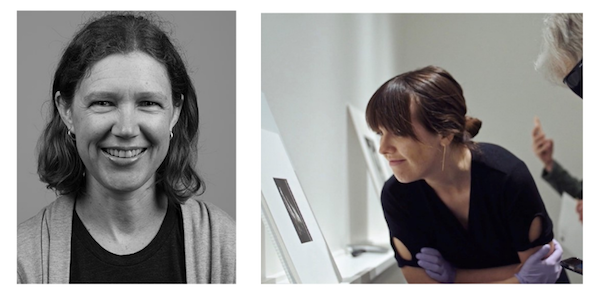
Coffee Gathering: Reimagining Engagement in Academic Art Museums
|
|
RAAMP Coffee Gatherings are monthly virtual chats aimed at giving participants an opportunity to informally discuss a topic that relates to their work as academic art museum professionals. Learn more here.
Submit to RAAMP
RAAMP (Resources for Academic Art Museum Professionals) aims to strengthen the educational mission of academic art museums by providing a publicly accessible repository of resources, online forums, and relevant news and information. Visit RAAMP to discover the newest resources and contribute.
RAAMP is a project of CAA with support from the Andrew W. Mellon Foundation and the Samuel H. Kress Foundation.
RAAMP Coffee Gathering: Gender Equity in the Museum (and Arts) Workplace
posted by CAA — June 30, 2020
Coffee Gathering: Gender Equity in the Museum (and Arts) Workplace
On Thursday, July 2 at 2:00 PM (EST) we will speak with Anne Ackerson and Joan Baldwin on gender equity in museums and workplaces.
To RSVP to this Coffee Gathering, please fill out this form.
A former museum director, Joan H. Baldwin is the Curator of Special Collections at The Hotchkiss School. She is the principal writer for the Leadership Matters blog which had 55,000 views in 2018. Her work has also appeared in The Museum Blog Book, “History News,” and “Museum” Magazine, Museopunks, and “The Guardian.” She is a co-founder of the Gender Equity in Museums Movement, and teaches in the Johns Hopkins University museum studies program. With Anne Ackerson, she is the co-author of Leadership Matters (2013) and Women in the Museum: Lessons from the Field (2017). She and Ackerson published a revision of Leadership Matters: Leading Museums in an Age of Discord in August 2019.
Anne W. Ackerson is a former history museum director, director of the Museum Association of New York, and director of the national Council of State Archivists. She is currently an independent consultant to cultural and educational nonprofits, specializing in leadership, governance, and management issues. With Joan H. Baldwin, she is the co-author of Leadership Matters, a book examining history museum leadership for the 21st century, and Women in the Museum: Lessons from the Workplace. She is a co-founder of the Gender Equity in Museums Movement (GEMM), which is focusing its recent efforts on education, advocacy, and policy development around pay equity, salary transparency, and sexual harassment in the museum workplace. In 2018, she and Baldwin spearheaded research, revealing that 62% of the museum workforce are affected by some form of gender discrimination. In addition to research and writing about gender inequity, she and Baldwin have presented their findings to the Texas and Pennsylvania Associations of Museums as conference keynoters and via their blog, Leadership Matters.
RAAMP Coffee Gatherings are monthly virtual chats aimed at giving participants an opportunity to informally discuss a topic that relates to their work as academic art museum professionals. Learn more here.
Submit to RAAMP
RAAMP (Resources for Academic Art Museum Professionals) aims to strengthen the educational mission of academic art museums by providing a publicly accessible repository of resources, online forums, and relevant news and information. Visit RAAMP to discover the newest resources and contribute.
RAAMP is a project of CAA with support from the Andrew W. Mellon Foundation and the Samuel H. Kress Foundation.
Support the Arts and Humanities
posted by CAA — November 05, 2018
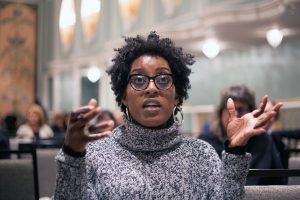
Curator and anthropologist Niama Safia Sandy at the 2017 CAA Annual Conference in New York. Photo: Ben Fractenberg
CAA needs your help to advance the programs and support we provide to the individuals and institutions that comprise the world’s largest international professional community in the visual arts. Bringing innovative new ideas and meaningful experiences to artists, designers, crafters, curators, art historians, critics, students and faculty members is always on the forefront of our minds, but we cannot do it alone.
We have over 9,000 members, but did you know that approximately half of our members are artists, students, retirees, and part-time faculty, who have subsidized memberships and conference registrations?
These members, and all members, have full access to CAA programs such as:
- Professional Development Fellowships and Publishing Grants
- Awards of Distinction
- Professional Development Podcasts
- Online Career Center
- Advocacy, Fair Use, and Standards & Guidelines
- Resources for Academic Art Museum Professionals (RAAMP)
We advocate and design programs for all our members, regardless of how much they pay in membership, and we hope that as in all strong communities, those that can help will.
A donation to the Annual Fund allows CAA to provide the much-needed support for the field at the individual level and to institutions. A contribution gives CAA more power to advocate and serve the ever-changing needs of our members.
Our Travel Fund assists ten students and scholars from across the country and around the world to attend the Annual Conference each year, but gifts directed towards this category will increase that number exponentially.
A contribution to the Publication Fund helps offset the cost to produce the print and online scholarly publications of The Art Bulletin, Art Journal, Art Journal Open, and caa.reviews.
Please consider a tax-deductible donation in either fund category that will help us better serve the visual arts community. No matter what fund category you choose, your support will go a long way in making a difference.
On behalf of the Board of Directors and staff of CAA, I thank you for your generosity.
Best regards,

Hunter O’Hanian
Executive Director and CEO
Show Your Support for the Arts and Humanities
posted by CAA — May 14, 2018
With an ever-changing academic and museum landscape, it’s clear that CAA must respond to the evolving needs of its members. We can no longer be an organization satisfied only with producing a large annual conference and quarterly journals. We must be a leader in the national conversation about the future of art history and studio arts education; indeed we can work to strengthen all humanities departments in colleges and universities. In addition, the CAA Annual Conference needs to be a supportive environment where everyone can connect as colleagues and friends year round, and to do this, we need your help.
As the world’s largest international visual arts association, we can unite to bridge the generational divide in the field and create a sense of belonging for younger members. We can understand where barriers exist and find ways to break them down. We can provide leadership to solve diversity and inclusion issues on college campuses.
It is our goal to make sure everyone who has a stake in the visual arts, from practicing artists to teachers of art, art history, design, curatorial studies, and museum practices at the college level—at every organization from the loftiest research institution to the most rural community college—feel included and welcomed.
Please consider making a tax-deductible donation that will help the next generation of art historians and visual artists. Your support directly goes to travel scholarships, publications, and reduced membership and registration for student and independent members. Together, we can work to provide everyone in the field the essential resources, contacts, mentorship, and advocacy they need.
Thank you for your generosity and with my best wishes,

Hunter O’Hanian
Executive Director and CEO
Introducing the New CAA
posted by CAA — February 27, 2018
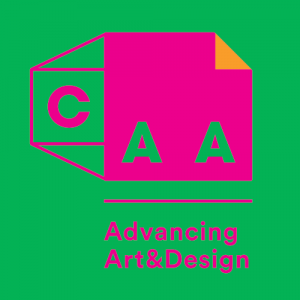
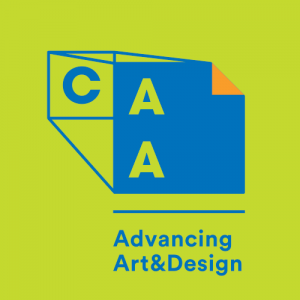
A New Look for CAA
As we look to build CAA in the future, with new and energized staff, new programs that will assist all of us in our professional lives, we have given the organization a new look and a name more focused on how our members know us after many years of service. We unveiled our new logo, new name, and new branding colors at the 106th Annual Conference last week in Los Angeles.
For decades, people have used the term “CAA” as a nickname for the Association. Many of our members feel connected to the words, College Art Association, but many others, especially new members and prospective members, feel these words don’t resonate with them. We started the renaming and rebranding process in spring of 2017 with the retention of a professional design and branding firm called Briteweb, which works exclusively with social sector organizations. This fall, as part of the research process, CAA and Briteweb held workshops, surveyed the current and past membership, and conducted interviews with long-standing and new members, as well as other arts professionals.
Nearly 1,500 members and members of the wider CAA community contributed to surveys and questionnaires about a new name and mark for the organization. As part of the process, we not only looked internally at our own membership but also at the marks of similar societies and organizations. To shepherd the process, CAA established a Branding Subcommittee, which reviewed and synthesized all of the ideas coming from membership and from Briteweb.
Last December we reached the first major milestone in the renaming and rebranding process. The Board, informed by member feedback, unanimously voted to simply call the organization CAA and to add a tagline ADVANCING ART & DESIGN to be used in coordination with the three letters.
Then we built a new logo. We built the new logo by thinking about the field, about our collective passions and interests, and the work we work we do every day. We narrowed down to two core components: the frame and the page. We used these symbols of the lives and work of our members as the building blocks of the new visual identity. They represent what we study, what we teach, what we practice, and what we create. We spend endless hours looking at, thinking about, writing about and reading about art.
We also wanted the idea of flexibility to be part of CAA’s new identity so we’ve adopted a logo system that can change as we do and as the field does. And the color palette was, of course, very important to us. We wanted to inject vibrancy and lots of color into our new logo system.
But change is more than a logo. This is about a shift in how we work to assist everyone in the field. A new look necessitates action. This is about more opportunities to present papers at the conference. This is about more opportunities to publish articles. It’s about more opportunities to network with colleagues. It’s about more opportunities to advocate for the field. It’s about beginning to think seriously about attracting otherwise marginalized communities to be part of the field.
This is the future of CAA.
A Brief History of 107 Years of Branding at CAA
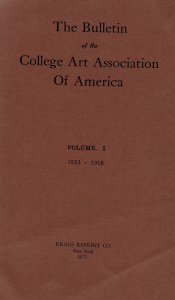
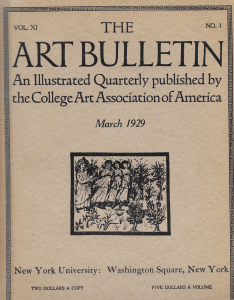
From its inception, the College Art Association understood the importance of its name. Publications like The Art Bulletin (founded in 1913) and Art Journal (founded in 1941) have proudly touted the name of the organization.
But formal branding and styling did not arrive until the 1950s when a modernist approach was adopted.
It was not until decades later, in the 1980s, that an official CAA logo took shape. The CAA logo of the 1980’s angled forward in all capital letters and had conjoined A’s.
In 2012, the CAA logo many know was born.
The new CAA logo dropped its height to use lowercase letters in a sans-serif font that was overlaid with swooping and intersecting lines.
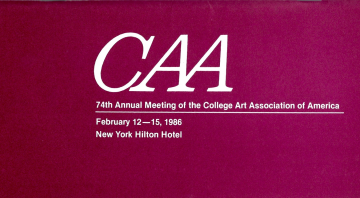

Murmurs and Decisions
For years, discussion has brewed among the CAA board of directors and members about a name change and new branding for the organization. The decision was formally written into the 2015-2020 CAA Strategic Plan.
In spring 2017, work officially began. CAA issued an RFP for the redesign and renaming of the 107-year old organization. The firm Briteweb, which specializes in branding for the social sector, was chosen as the best fit from eight other firms.
Step 1: Renaming
Feedback. Feedback. Feedback. The first step on the path to renaming the College Art Association (CAA) was gathering feedback from our members and stakeholders. A survey went out to all members, current and lapsed. Phone calls and interviews took place with stakeholders and board members. We learned a lot.
“Overall, it seems to me that the goal should be to figure out how to make sure that everyone who has a stake in teaching art, design, art history, curatorial and museum practices at the college level understand that they are included and welcomed—that it is their professional organization.” –CAA member survey response
Feedback we received from our members told us how CAA matters to them, where we can improve, and where we should focus our energy as we move into the future.
Step 2: A Tagline That Fits
Members told us that CAA has to move forward. You told us that we have to be there for the next generations of students and scholars in the arts and humanities. We have to advance the field by supporting the field. Our tagline was born.
“Advancing Art & Design”
We also learned that there was immeasurable value packed into three letters—CAA. We explored different acronyms, new names, and different words to fit CAA. But in the end, it came down to the letters CAA being the sole representation of the organization as it moves into the future, stepping up a role they have already played for decades.
Step 3: A Logo is Born
With our name settled, it was time to design. What does advancing mean visually? How can we encompass the many professions and personalities of our membership in a visual representation? Rounds of designs were reviewed.
We wanted risk, but not too risky.
The new CAA logo includes nods to the frame and page, two crucial elements of our members’ lives. It has dimensionality and flexibility. Just like our members.
Support the CAA Community on #GivingTuesday
posted by CAA — November 28, 2017
As we celebrate the spirit of generosity on #GivingTuesday, we’re highlighting LA-based organizations to consider giving to alongside CAA.
We thank you for your support!
COLLEGE ART ASSOCIATION
This past year, we fought for the causes of our members and those in the arts and culture field at large. Your contribution helps to ensure that CAA continues our mission in promoting the visual arts and their understanding through advocacy, intellectual engagement, and a commitment to the diversity of practices and practitioners. The larger our voice, the larger the impact we will have.
18TH STREET ARTS CENTER
One of our recommended 2018 conference stops, the 18th Street Arts Center is one of the top twenty artist residency programs in the US. They value art-making as an essential component of a vibrant, just, and healthy society where the creative process is just as important as the outcome.
MUSEUM OF LATIN AMERICAN ART (MOLAA)
Another one of our 2018 conference stops, the Museum of Latin American Art (MOLAA) is the only museum in the United States dedicated to modern and contemporary Latin American art, and serves the greater Los Angeles area.
PROMESA BOYLE HEIGHTS
Promesa Boyle Heights is a collective of residents, youth, schools, and community organizations united in lifting community voices and working together to transform conditions and improve opportunities for students and families in Los Angeles.
American Philological Association Becomes the Society for Classical Studies
posted by CAA — September 08, 2014
The following message was sent as an attachment to an email from Adam D. Blistein, executive director of the Society for Classical Studies, on Friday, September 5, 2014.
Letter about Our New Name
Dear Colleague:
I am writing to let you know that the American Philological Association, founded in 1869 and the principal learned society for Classics scholars in North America, has changed its name to the Society for Classical Studies (SCS). We have also unveiled the new logo that appears on this letterhead and will soon launch a new web site. These changes culminate a decade-long process of re-examining the role of the Society in the 21st century, with the goal of better promoting and serving a growing interest in Classical antiquity on the part of students and teachers at all levels as well as the general public.
For centuries the cultures of ancient Greece and Rome have inspired creativity, contemplation, scholarship, and teaching both inside and outside of the academy. While we continue to serve our original academic mission, we also want to take advantage of new technologies which make it easier to share the insights and pleasures of studying Classical antiquity with the widest possible audience. A new name is critical to this expanded mission. A philological focus is at the core of much scholarship on Greek and Latin texts, and we will continue to take an active role in projects like the Digital Latin Library that represent excellent philology in the 21st Century. However, we recognize that the term is no longer widely understood and therefore can be a barrier to communication with a broader public. Especially now, when it is so important for us to advocate for the study of Classics and, indeed, of all the humanities, we must strive for clarity in the transmission of our message.
We recently completed a successful capital campaign which raised an unprecedented $3.2 million to provide essential resources for Classics teachers and scholars and to share our appreciation for Classical antiquity as broadly as possible. The name of the Campaign (From Gatekeeper to Gateway: The Campaign for Classics in the 21st Century) reflected this ambition. Donors from both inside and outside of our membership supported this effort because they shared our belief that knowledge of Classics is a valuable component of education, attracts broad interest, and has much to contribute to contemporary society. Our new web site is the next step in responding to this interest. It will add features targeted to a variety of audiences, improve its accessibility to different types of users, and facilitate communications that support the Society’s goal to be the public face of Classics in North America.
It is a special privilege to be guiding the Society as we take this significant step and establish a new level of leadership in Classical Studies. The SCS looks forward to continuing to work with you to encourage the study of Classics and of all humanistic disciplines.
Very truly yours,
Kathryn Gutzwiller
President




